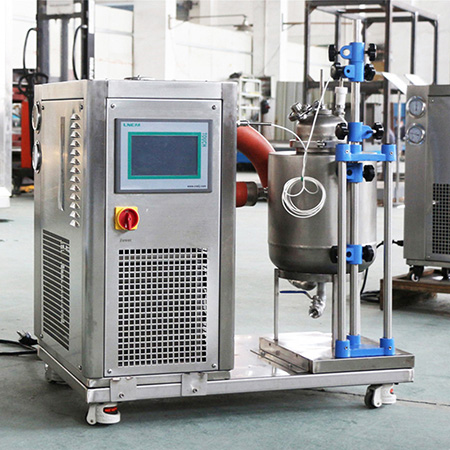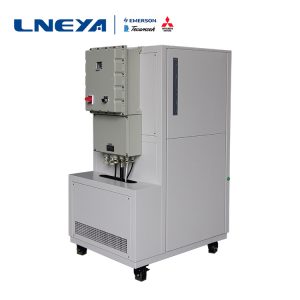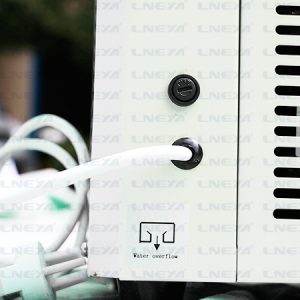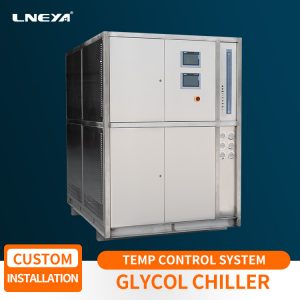Why does the heat transfer oil control system device heat transfer oil coke exist?
In the heat transfer oil control system device, the heat transfer oil is used for the cooling and heating temperature control. If it is not the same as the LNEYA, the use of the fully closed circuit can affect the formation of certain coking, resulting in failure.
In the heat transfer oil control system device, three main chemical reactions occur in the heat transfer process: thermal oxidation reaction, thermal cracking and thermal polymerization. Coking occurs from thermal oxidation reactions and thermal polymerization reactions. The thermal polymerization reaction occurs because the heat transfer oil is heated during the operation of the heating system, and the reaction generates macromolecular high-boiling substances such as condensed aromatic hydrocarbons, colloids and asphaltenes, which are gradually deposited on the surface of the heater and the pipeline to form coking.
The thermal oxidation reaction of the heat transfer oil is mainly caused by the heat transfer oil in the expansion tank of the open heating system contacting the air or participating in the circulation, and the reaction generates low-molecular or high-molecular acidic components such as alcohol, aldehyde, ketone, acid, etc., and further generates Glue, asphaltene and other viscous substances, then form coking; thermal oxidation is caused by abnormal conditions, once it occurs, it will accelerate thermal cracking and thermal polymerization, so that the viscosity increases rapidly, heat transfer efficiency decreases, causing overheating and furnace tube Coking. The resulting acid can also cause corrosion and leakage of equipment.

The heat transfer oil control system device heat transfer oil will form a heat insulation layer during use, resulting in a decrease in heat transfer coefficient, an increase in exhaust gas temperature, and an increase in fuel consumption. On the other hand, since the temperature required for the production process remains unchanged, The heating temperature rises sharply, causing cracks, causing serious accidents such as equipment and operator personal injury.
In the heat transfer oil control system device, if the heat transfer oil has a coking failure, the heat transfer oil control system device will be unavailable, and the heat transfer oil control system device is required to perform certain maintenance work.
(This article is from the source network. If there is any infringement, please contact LNEYA for deletion, thank you.)
관련 권장 사항
-
열유 2차 순환 시스템 안전 지식
1166The thermal oil secondary circulation system is equipped with various instruments and equipment for temperature control. After market research, carefully research and production of temperature-controlled products, when using, you need to pay atten...
세부 정보 보기 -
Talk about the main points of choice for circulating water chiller in laboratory
995Circulating water cooler is also called chiller. It is a kind of cooling water equipment that can provide constant temperature, constant flow and constant pressure. Currently there are many kinds of chillers in the market. How to buy a suitable ch...
세부 정보 보기 -
대형 냉장 및 가열 서큘레이터와 테스트 챔버의 차이점
9441. 특수한 상황에서 고온 테스트의 경우 고온 및 저온 테스트 챔버가 요구 사항을 충족하지 못할 수 있습니다. 일반적으로 고온 및 저온 테스트 상자의 고온 상한은 200 ℃이며 그 ...
세부 정보 보기 -
정유 및 탈왁싱의 워크플로 및 장비 구성
1066오일 탈왁싱 공정은 왁스와 오일의 융점 차이에 기반하며 온도가 낮아질수록 오일에 대한 왁스의 용해도가 작아지고 냉각에 의해 결정성 왁스가 침전됩니다. 그런 다음 t를 통해 ...
세부 정보 보기
 LNEYA 산업용 냉각기 제조업체 공급 업체
LNEYA 산업용 냉각기 제조업체 공급 업체













